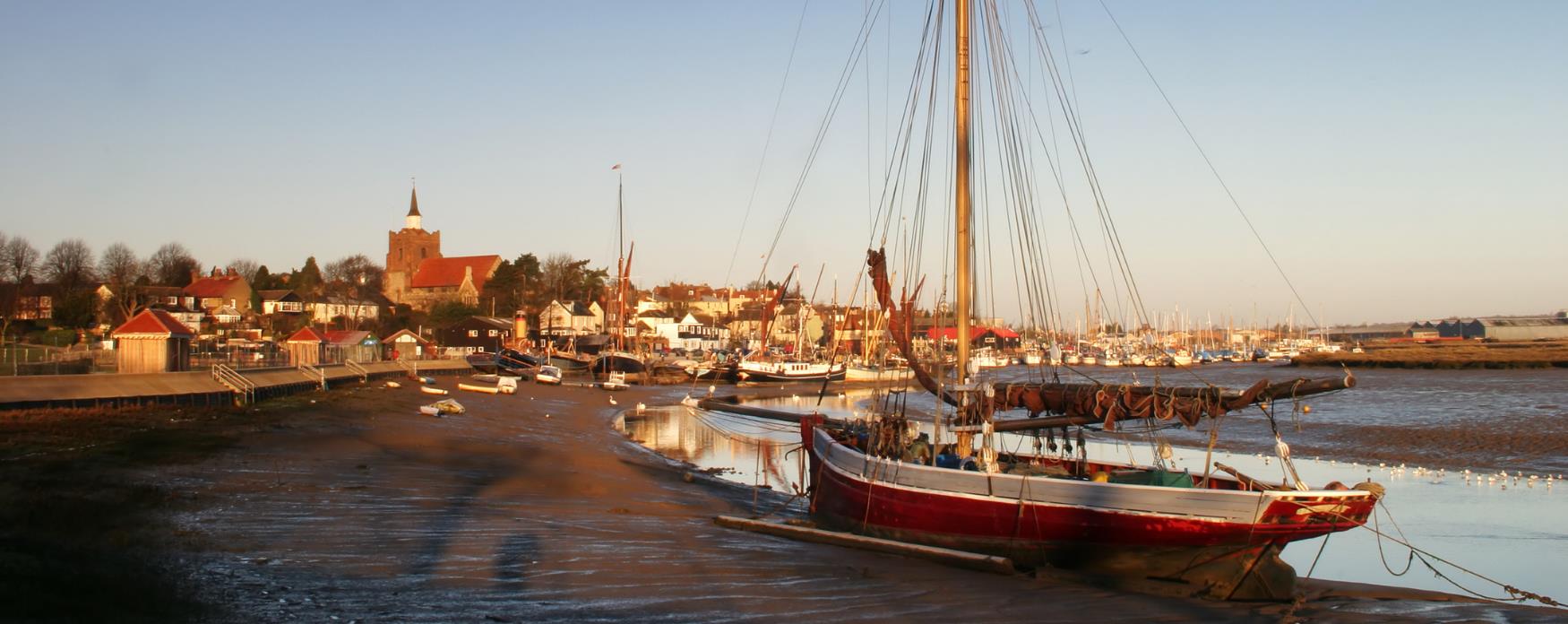Maldon

Maldon
Maldon is a historic maritime town that is known across the world for its connections to the Saltmarsh Coast, with its sea salt, infamous mud race and the iconic Thames Sailing Barges. Maldon is also a place of historical significance as the second oldest town in Essex, receiving its Royal Charter from King Henry II in 1171.
The town centre has numerous historical sites and listed buildings, as well as a wide range of independent shops, restaurants, pubs and cafés for you to explore. There is a good balance of popular high street names and smaller independent shops including artisan and specialists, traditional butchers, bakers and more as. As well as shopping, there is a great range of local and international cuisine available throughout the town.
Explore heritage, independent retailers and local businesses before continuing down to the river to visit the historic Hythe Quay and explore all that Promenade Park has to offer. Venture further along the Saltmarsh Coast to explore Northey Island and Heybridge Basin, or continue in land to discover Beeleigh Falls and the nearby canals leading back to Chelmsford.
Our History
A settlement in Maldon has existed since before the time of Roman occupation. The town was clearly of some importance in the 10th century, as a royal mint was established and King Edward the Elder fortified the town in 913. In the following years, a Viking raid was successfully beaten off, but several decades later at the Battle of Maldon 991, a second Viking raid defeated the Saxons. By the time of the Domesday Book in 1086, Maldon and Colchester were the only two boroughs recorded in Essex. Less than a century later, a Royal Charter was granted to the town by Henry II in 1171.
Maldon also had a prominent history with shipbuilding and the town had been providing a ship for the royal cause since the Anglo-Saxon period. In 1347, the town supplied two ships and thirty two men to Edward III for the Siege of Calais. At the Battle of Solebay 1672 against the Dutch, a Maldon ship the ‘Jersey’ took part and Samuel Pepys was made Captain of this vessel.
In the 19th century, Maldon had seen much growth and being a centre of admiralty jurisdiction had established the town as the largest in Essex after Colchester. It owed much of its success to its sea trade and carrying corn to London was a major trade until the 1870s. When it became no longer economic to grow it in Essex, the Thames Sailing Barges carried hay and straw to London instead. With the arrival of the railway to Maldon in 1846 and the revolution of transport, over the next several decades the use of the barges gradually declined as did the town’s reliance on its port.
Maldon is also famous for the Battle of Maldon in 991, where Viking raiders defeated the Saxons on the causeway of Northey Island. This is the oldest recorded battlefield site in England, and the events of the battle are described in an epic poem, which is regarded as one of the finest examples of Old English literature, alongside Beowulf.

